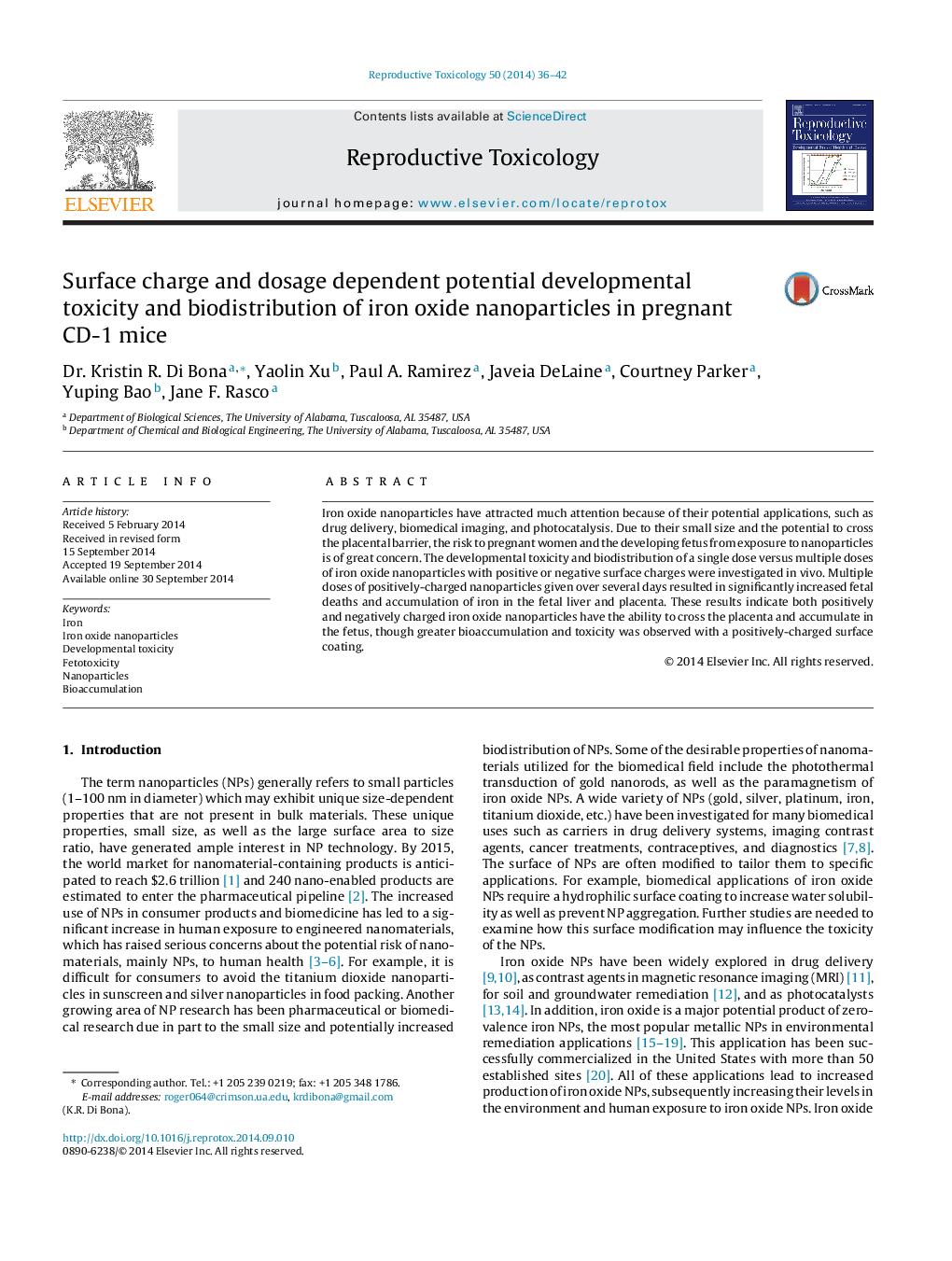| Article ID | Journal | Published Year | Pages | File Type |
|---|---|---|---|---|
| 2593491 | Reproductive Toxicology | 2014 | 7 Pages |
•Surface-charge dependent developmental toxicity of Fe2O3 nanoparticles was examined.•Fe2O3 nanoparticles induced charge and exposure-dependent toxicity in pregnant mice.•Increased fetotoxicity was observed with multiple exposures to Fe2O3 nanoparticles.•Positively-charged polyethylineimine-Fe2O3 nanoparticles exhibited greater toxicity.•Fetal liver Fe bioaccumulation was observed with positively-charged nanoparticles.
Iron oxide nanoparticles have attracted much attention because of their potential applications, such as drug delivery, biomedical imaging, and photocatalysis. Due to their small size and the potential to cross the placental barrier, the risk to pregnant women and the developing fetus from exposure to nanoparticles is of great concern. The developmental toxicity and biodistribution of a single dose versus multiple doses of iron oxide nanoparticles with positive or negative surface charges were investigated in vivo. Multiple doses of positively-charged nanoparticles given over several days resulted in significantly increased fetal deaths and accumulation of iron in the fetal liver and placenta. These results indicate both positively and negatively charged iron oxide nanoparticles have the ability to cross the placenta and accumulate in the fetus, though greater bioaccumulation and toxicity was observed with a positively-charged surface coating.
